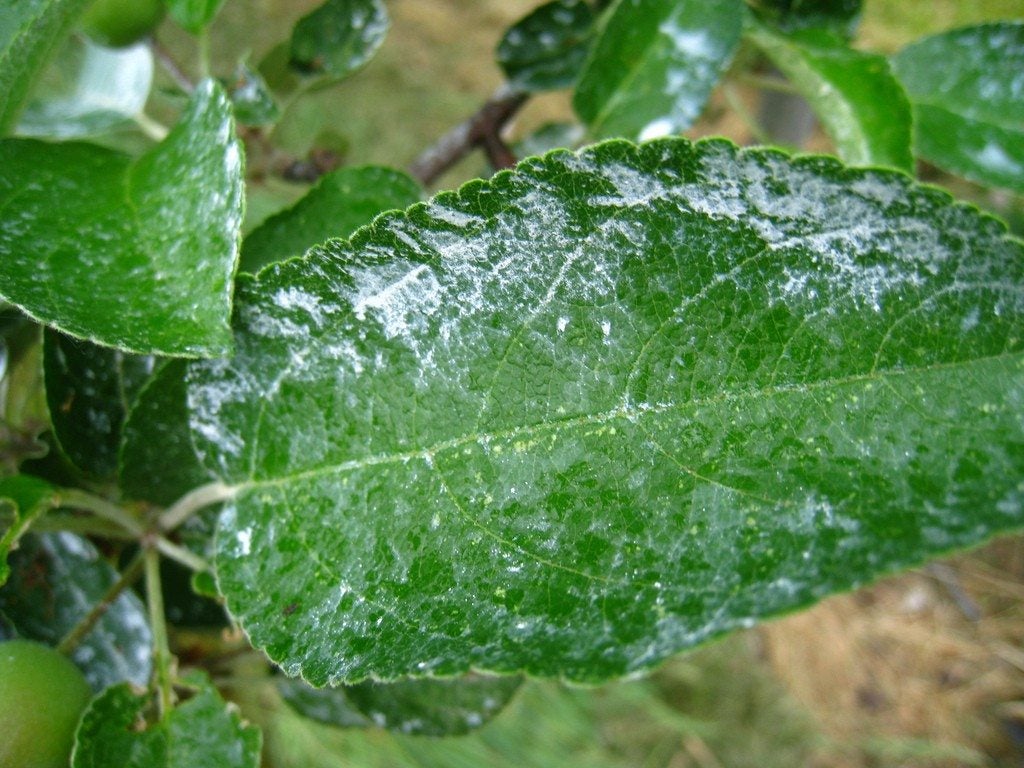What Is Kaolin Clay: Tips On Using Kaolin Clay In The Garden

Do you have a problem with birds eating your tender fruit such as grapes, berries, apples, peaches, pears, or citrus? A solution may be an application of Kaolin clay. So, you inquire, “what is Kaolin clay?” Keep reading to learn more about using Kaolin clay on fruit trees and other plants.
What Is Kaolin Clay?
A clue to answer the question “What is Kaolin clay?” is that it is also referred to as “China clay.” Kaolin clay is used in the manufacture of fine porcelain and china and also instrumental in the production of paper, paint, rubber, and heat resistant materials. Arising from the Chinese for Kau-ling or “high ridge” in reference to a hill in China where the pure clay was first mined by Jesuit missionaries around 1700, Kaolin clay uses today extend to Kaolin clay in the garden.
Kaolin Clay in the Garden
The use of Kaolin clay in the garden has been found to control insect pests and disease as well as protecting against sunburn or heat stress and may enhance fruit color too. A natural mineral, Kaolin clay insect control works by creating a barrier film by covering the leaves and fruit with a white powdery film, which adheres and irritates insects, thereby eliminating their scavenging on fruit or leaves. Using Kaolin clay on fruit trees and plants helps repel many types of insects such as grasshoppers, leafrollers, mites, thrips, some moth varieties, psylla, flea beetles, and Japanese beetles. Using Kaolin clay insect control will also reduce the number of damaging birds by leaving them no delicious bugs to munch on and, hopefully, cancelling out the use of bird nets. Kaolin clay for plants can either be obtained from a pottery clay supplier or as a product called Surround WP, which is then mixed with liquid soap and water prior to application.
How to Use Kaolin Clay for Plants
To use Kaolin clay for plants, it must be mixed thoroughly and applied via a sprayer with continuous agitation, spraying the plants liberally. Fruit must be washed prior to eating and Kaolin clay insect control must be applied before the pests arrive. Kaolin clay in the garden can be used up to the day of harvest. The following information will help with mixing Kaolin clay for plants (or follow manufacturer's instructions):
- Mix 1 quart (1 L.) of Kaolin clay (Surround) and 1 tablespoon (15 ml.) liquid soap with 2 gallons (7.5 L.) of water.
- Reapply Kaolin clay for plants every 7 to 21 days for at least four weeks.
- Kaolin clay insect control should occur within three applications as long as sufficient and uniform spray has been achieved.
A nontoxic material, application of Kaolin clay in the garden does not seem to impact honeybee activity or other beneficial insects integral to healthy fruit trees or other food plants.
Gardening tips, videos, info and more delivered right to your inbox!
Sign up for the Gardening Know How newsletter today and receive a free copy of our e-book "How to Grow Delicious Tomatoes".

Amy Grant has been gardening for 30 years and writing for 15. A professional chef and caterer, Amy's area of expertise is culinary gardening.
-
 Types Of Tomatoes Explained: Explore The Many Wonderful Shapes, Colors, Flavors, & Best Uses
Types Of Tomatoes Explained: Explore The Many Wonderful Shapes, Colors, Flavors, & Best UsesThe world of tomato varieties is vast and fascinating. Learn about the key types to grow in your garden, tailored to your preferences and space.
By Amy Grant
-
 Try The Trend – Turn Any Bed Into A Keyhole Garden With This Clever In-Ground Composter
Try The Trend – Turn Any Bed Into A Keyhole Garden With This Clever In-Ground ComposterKeyhole gardening is an efficient and sustainable practice that saves space. Get started on this DIY project quickly and easily with an in-ground composter.
By Bonnie L. Grant